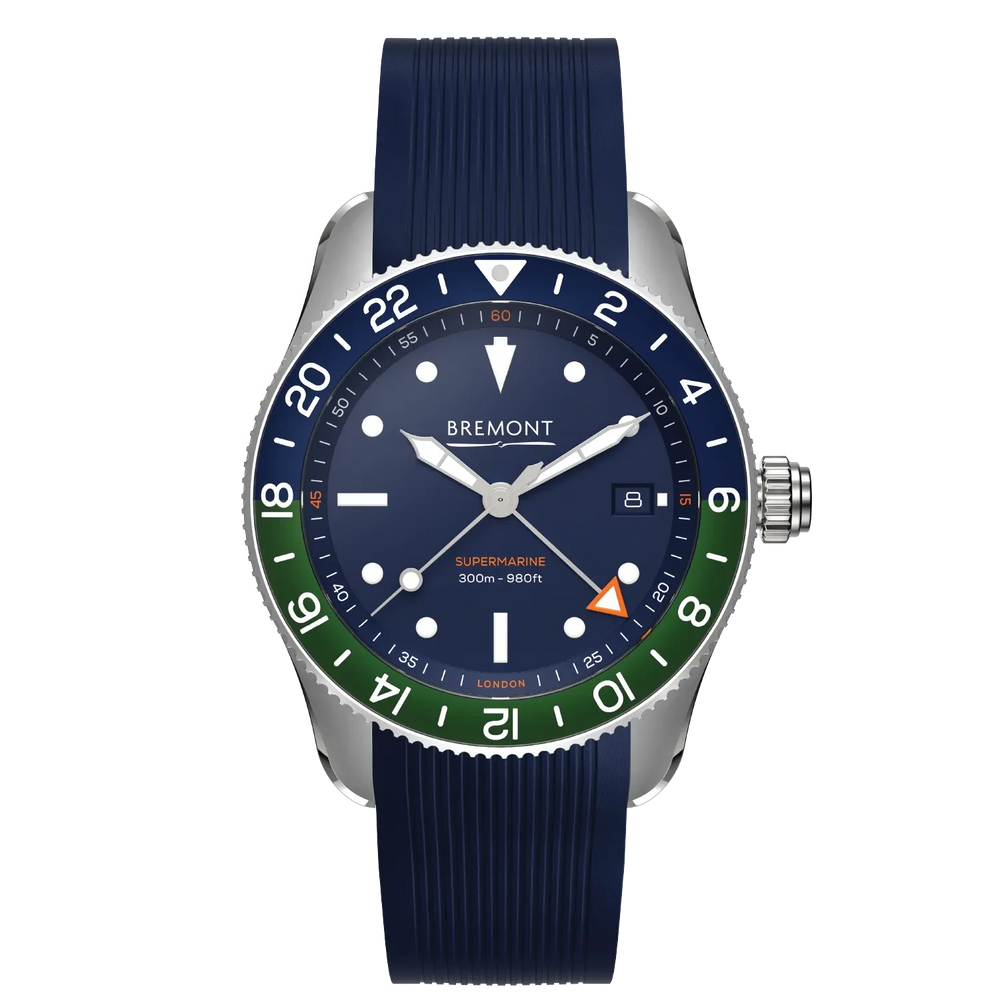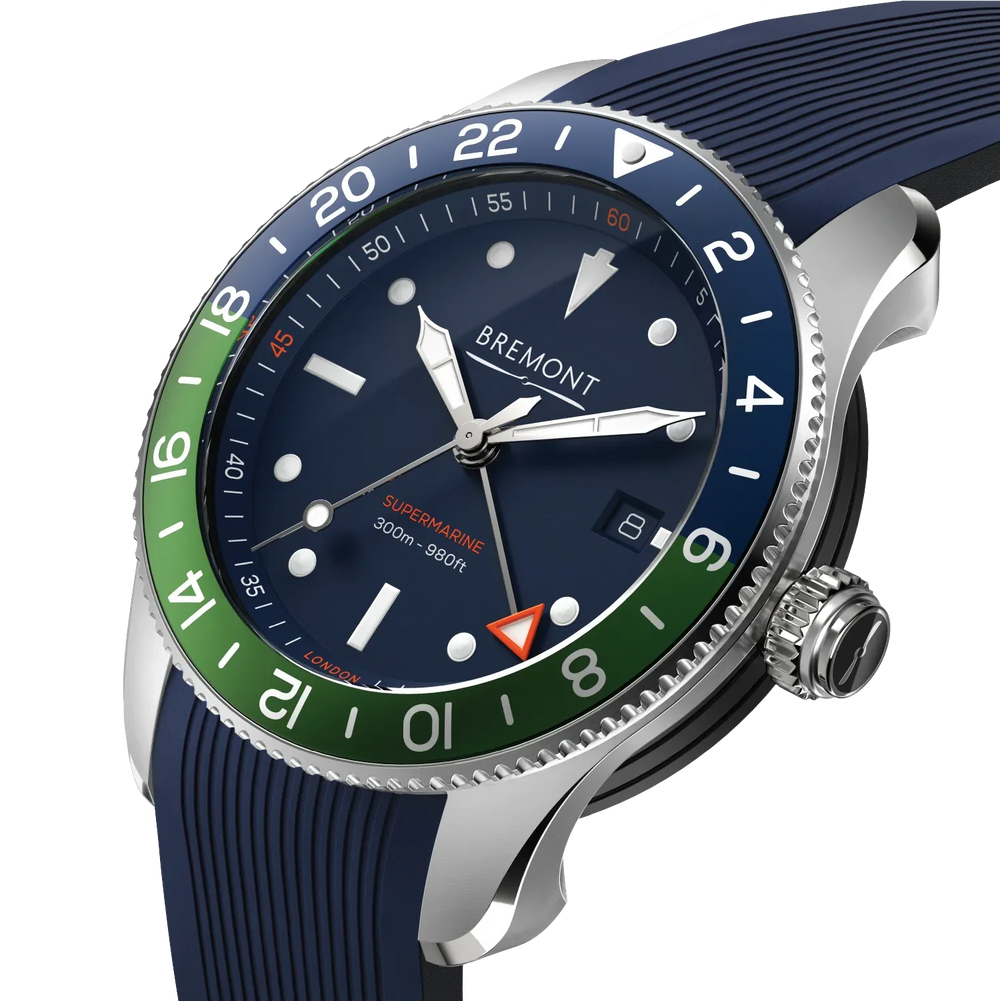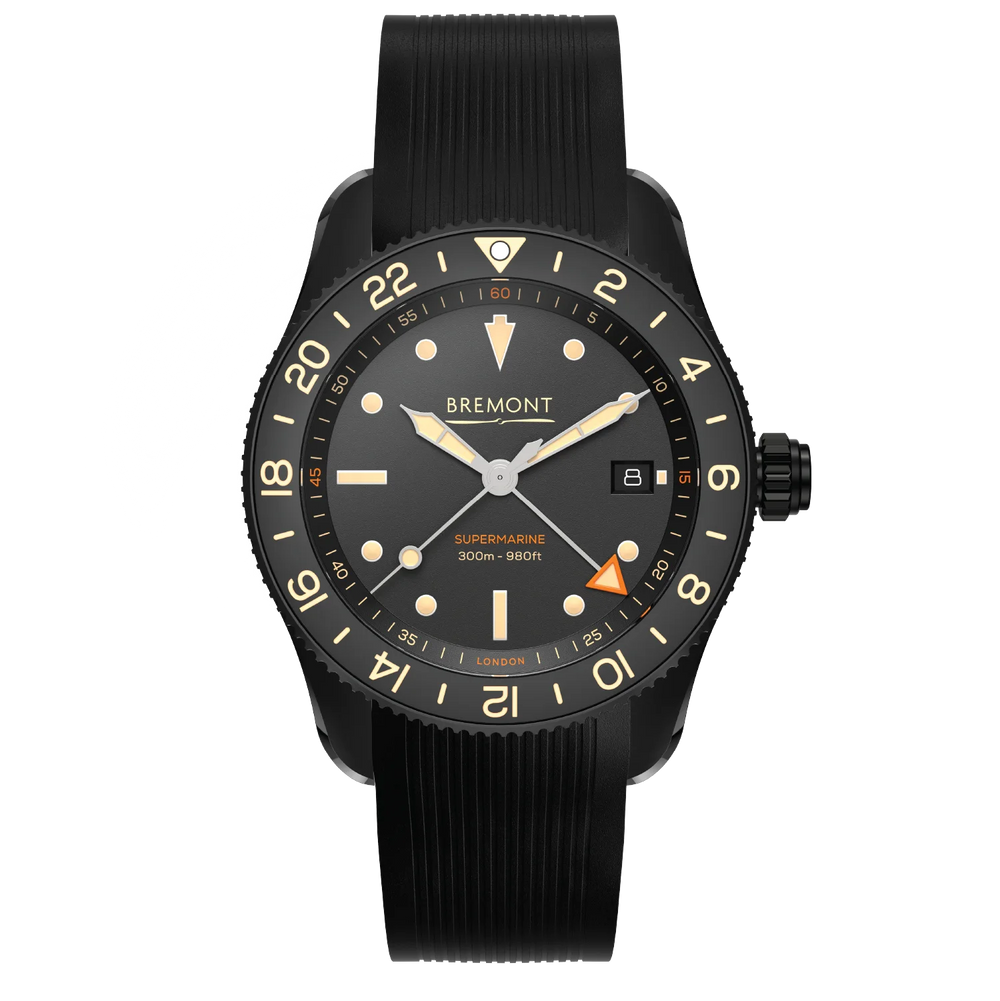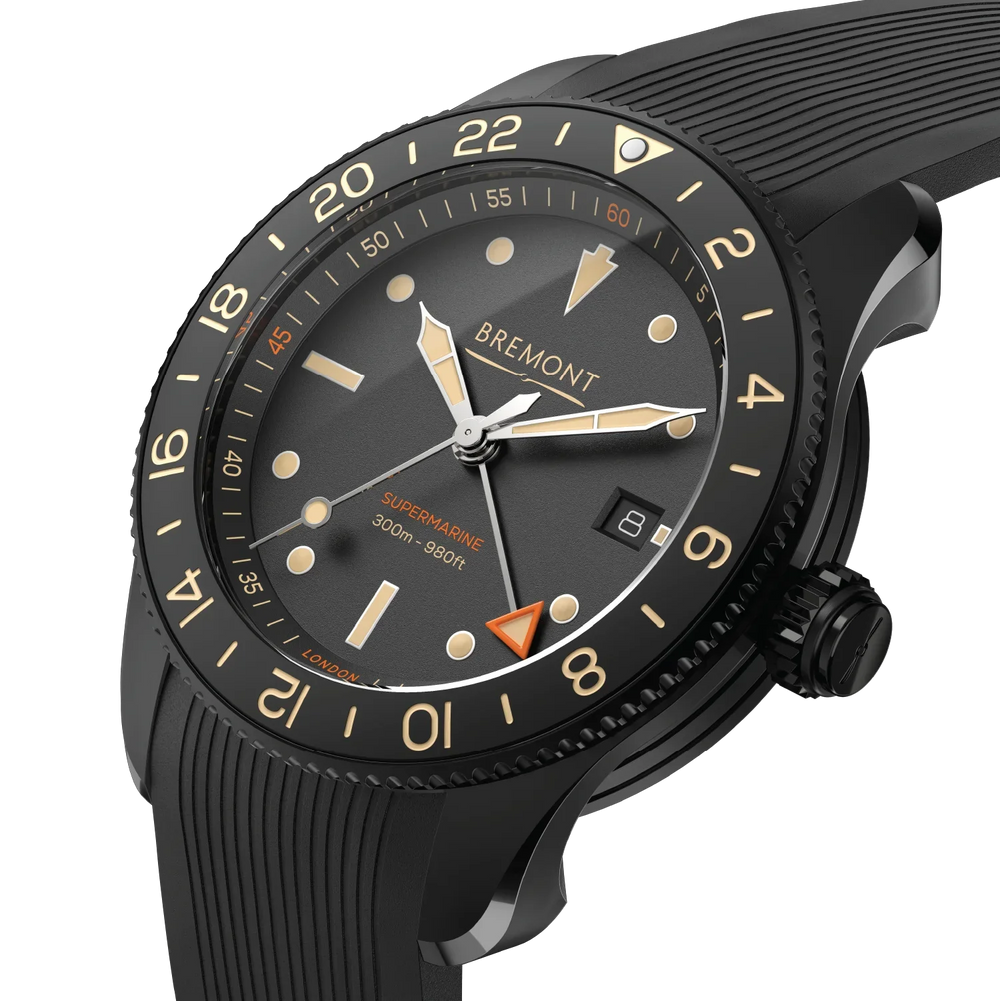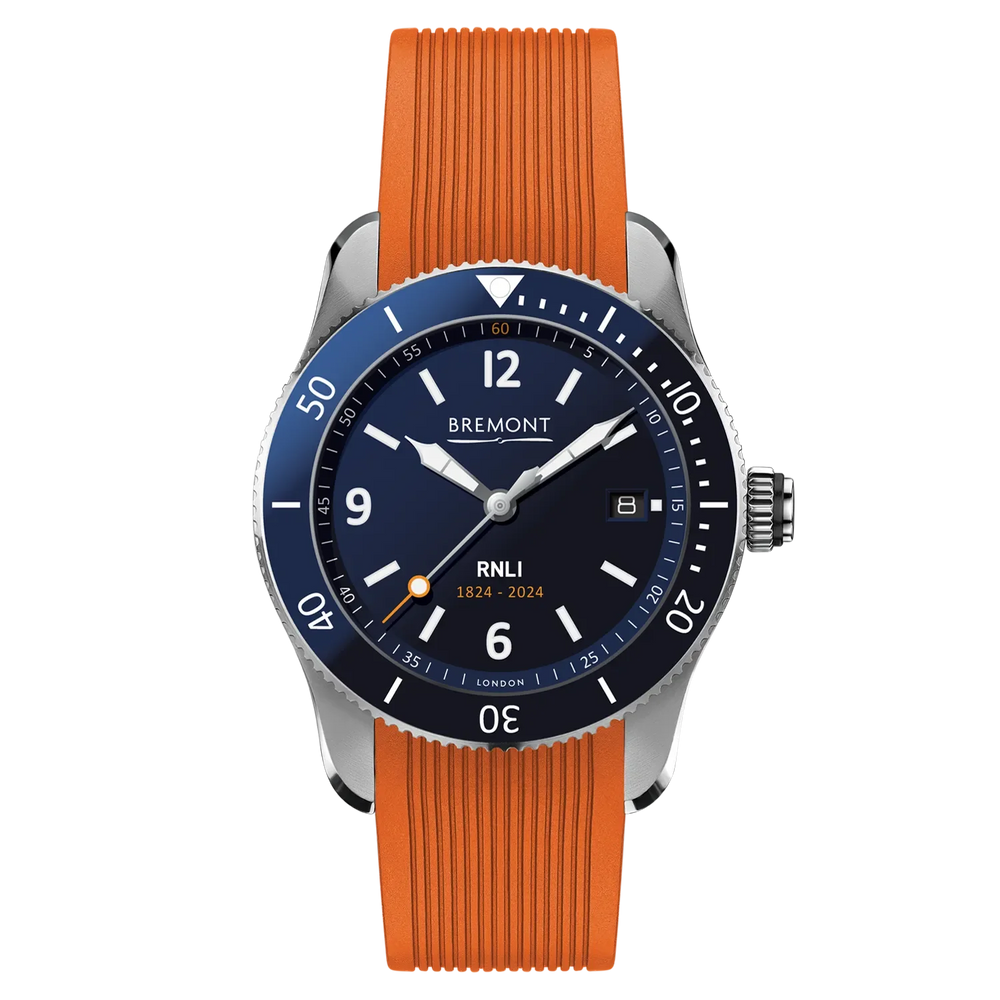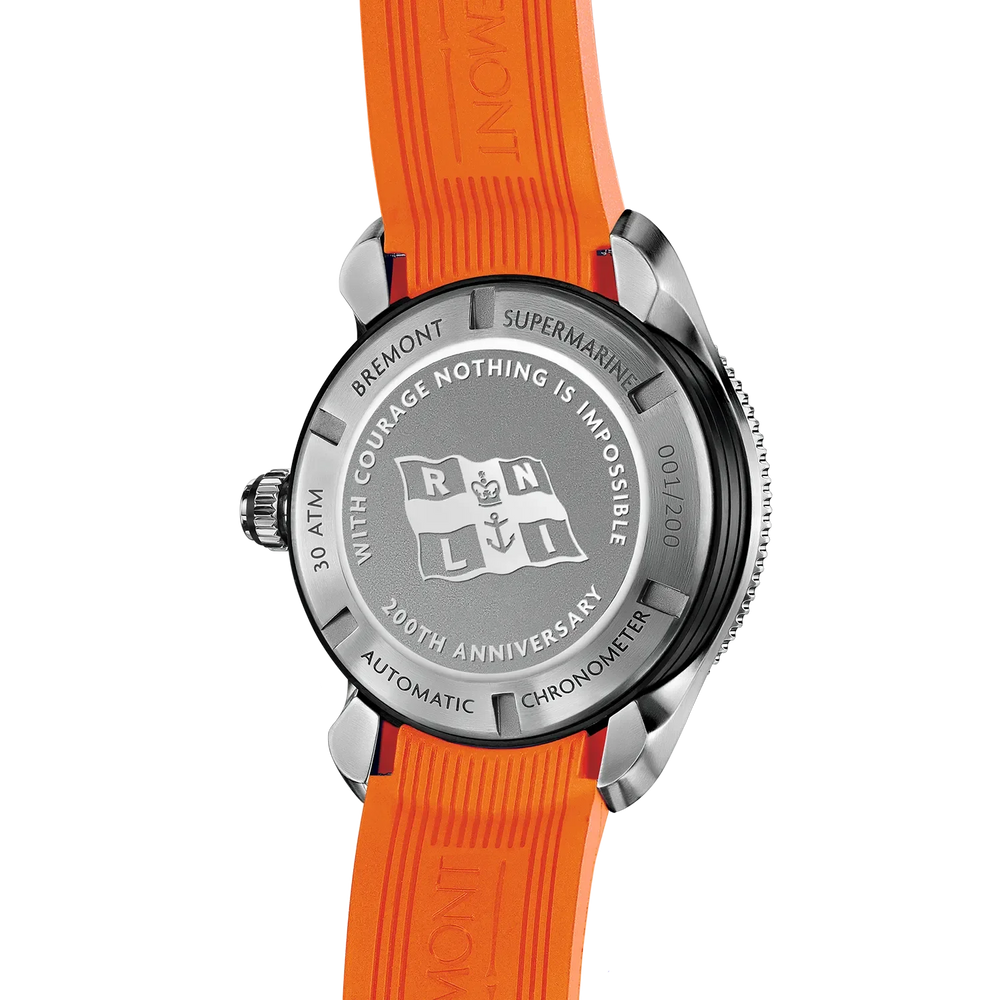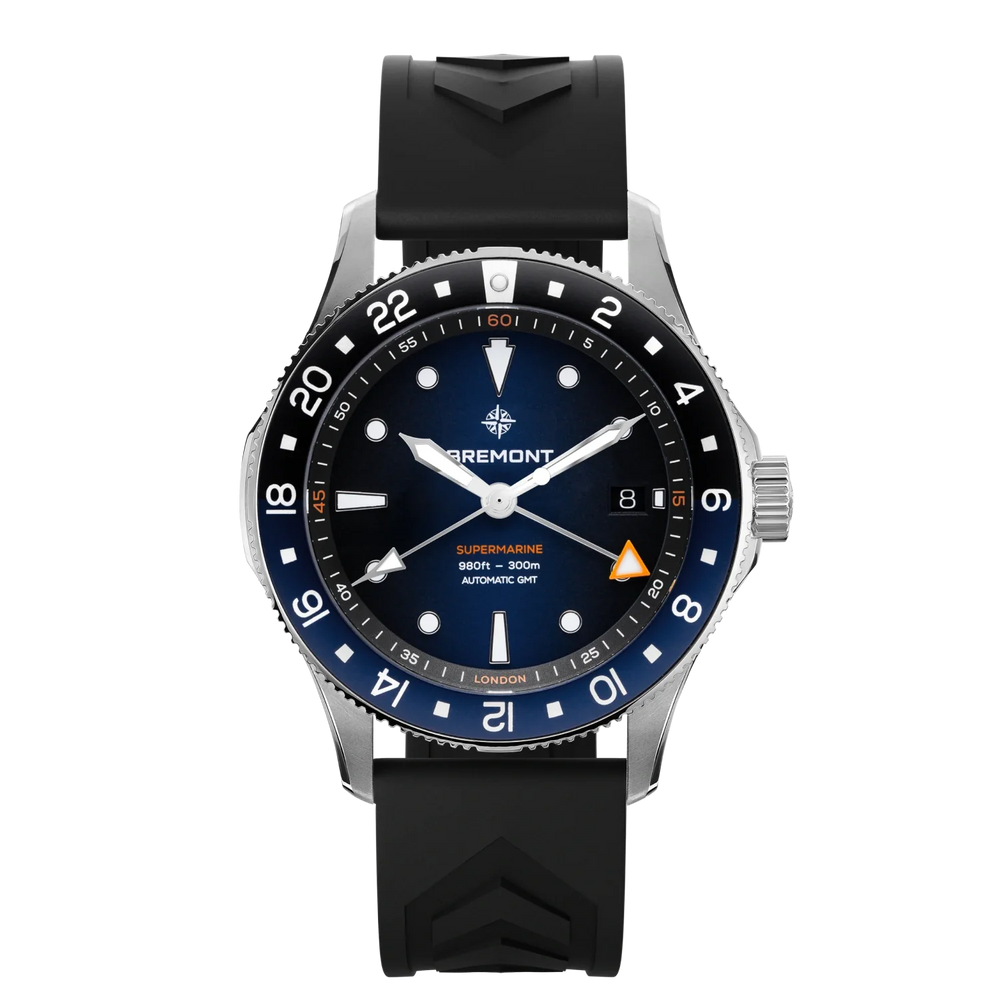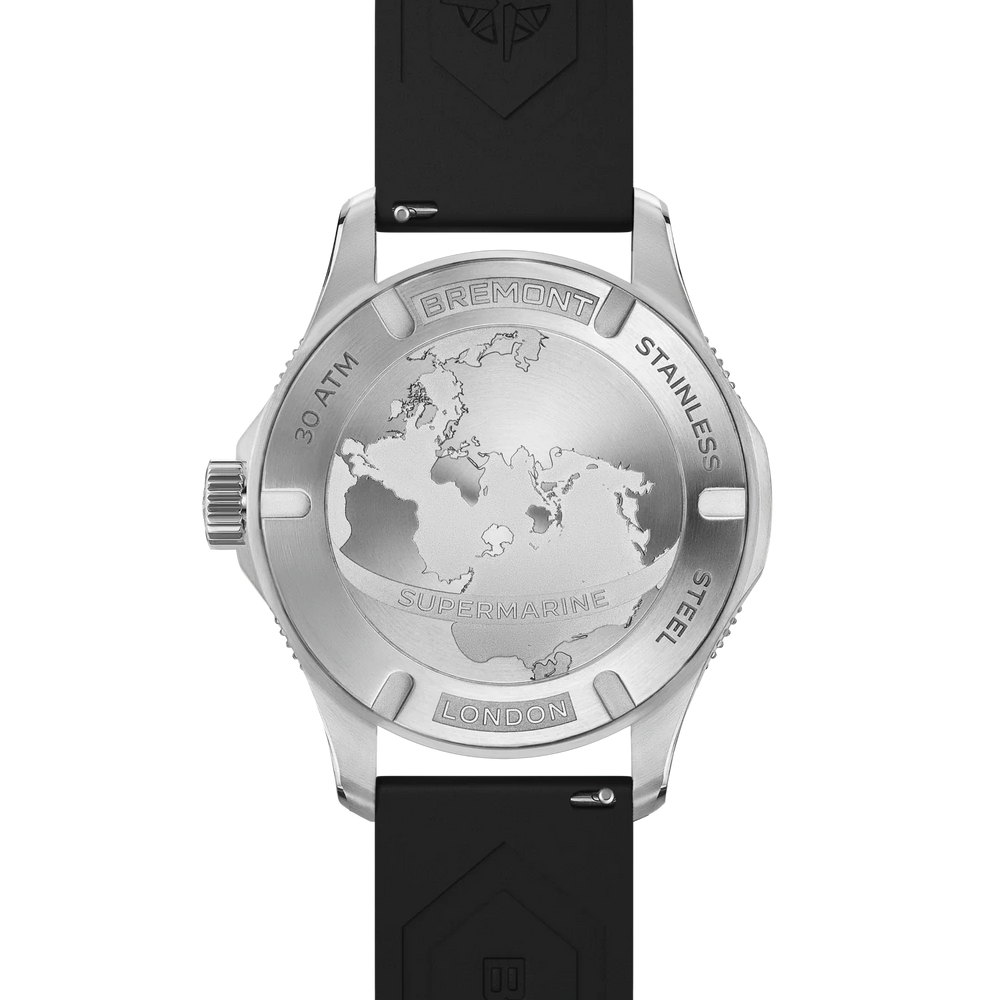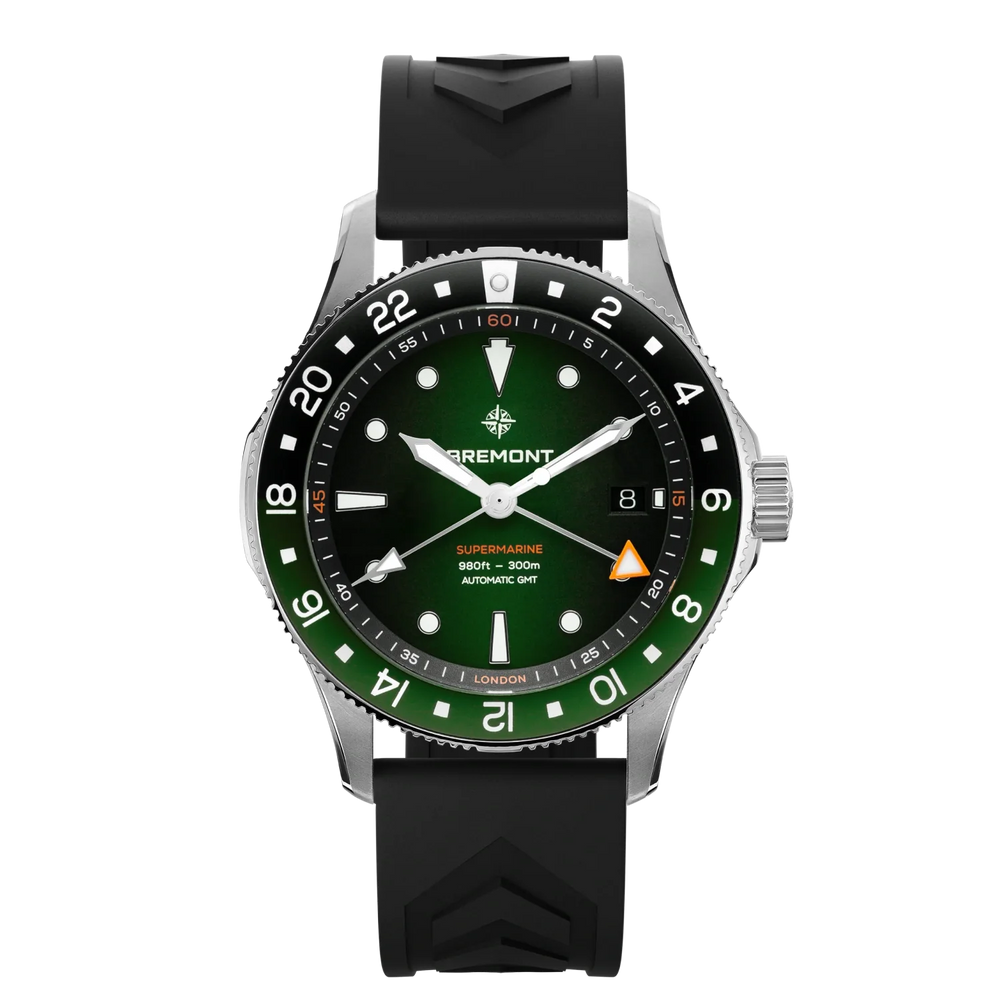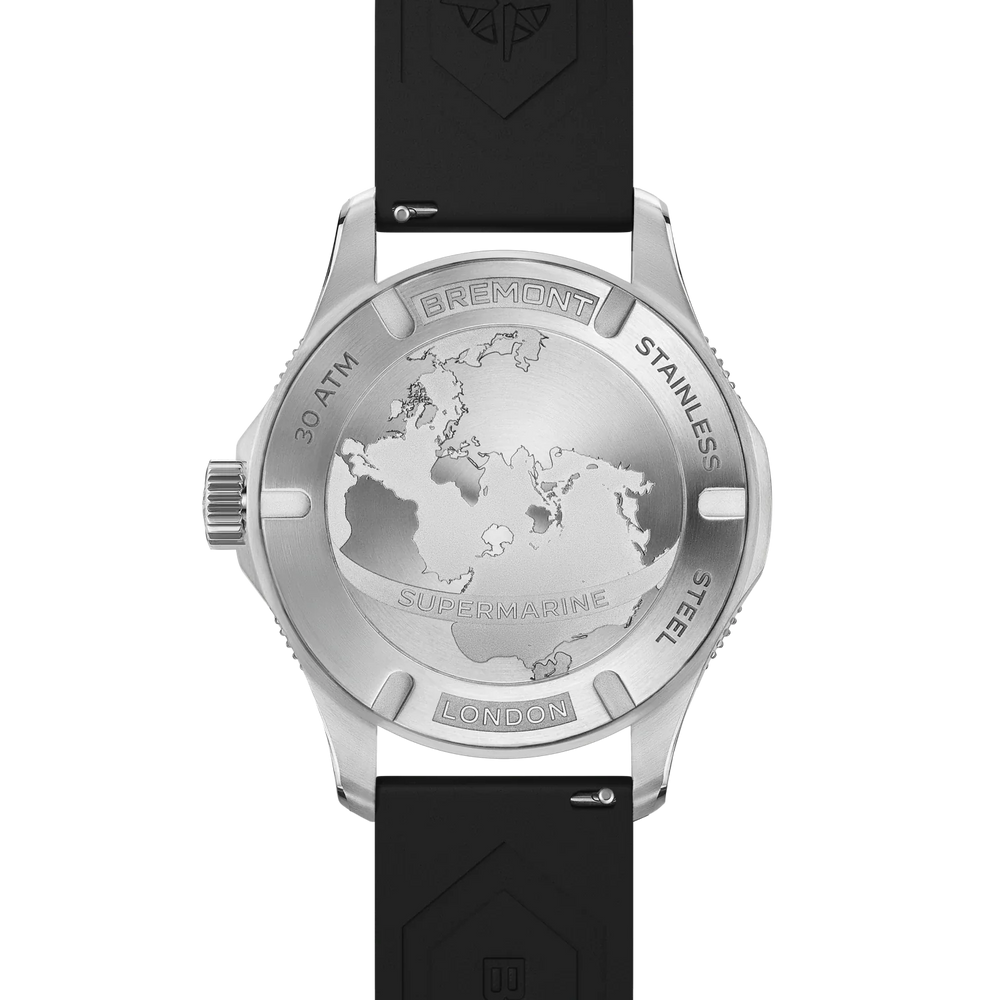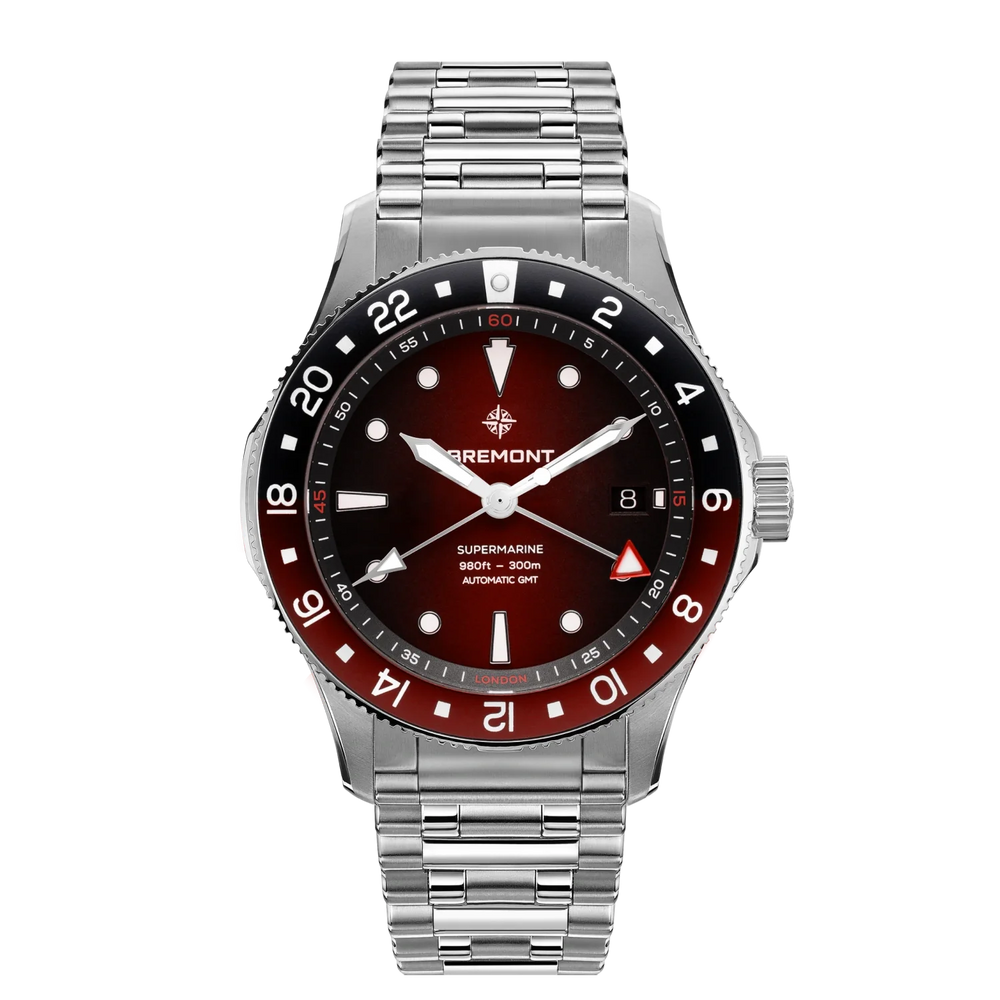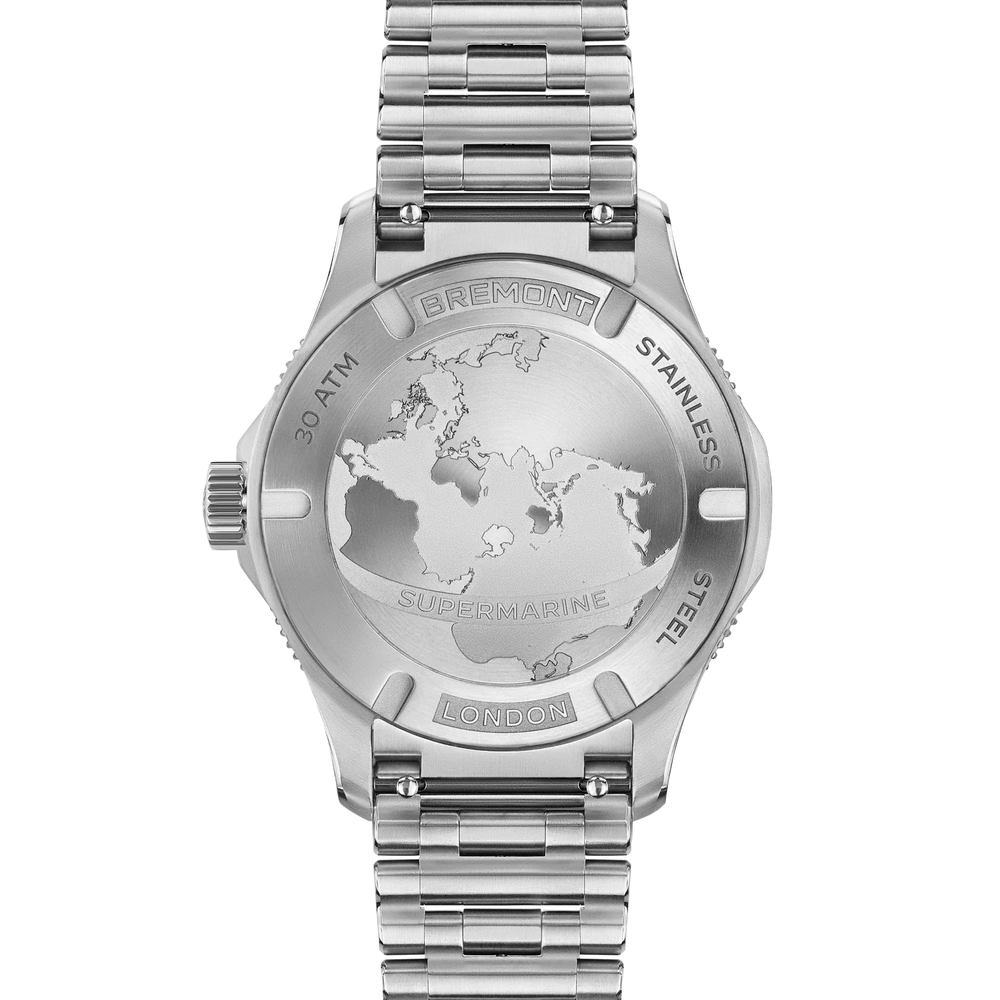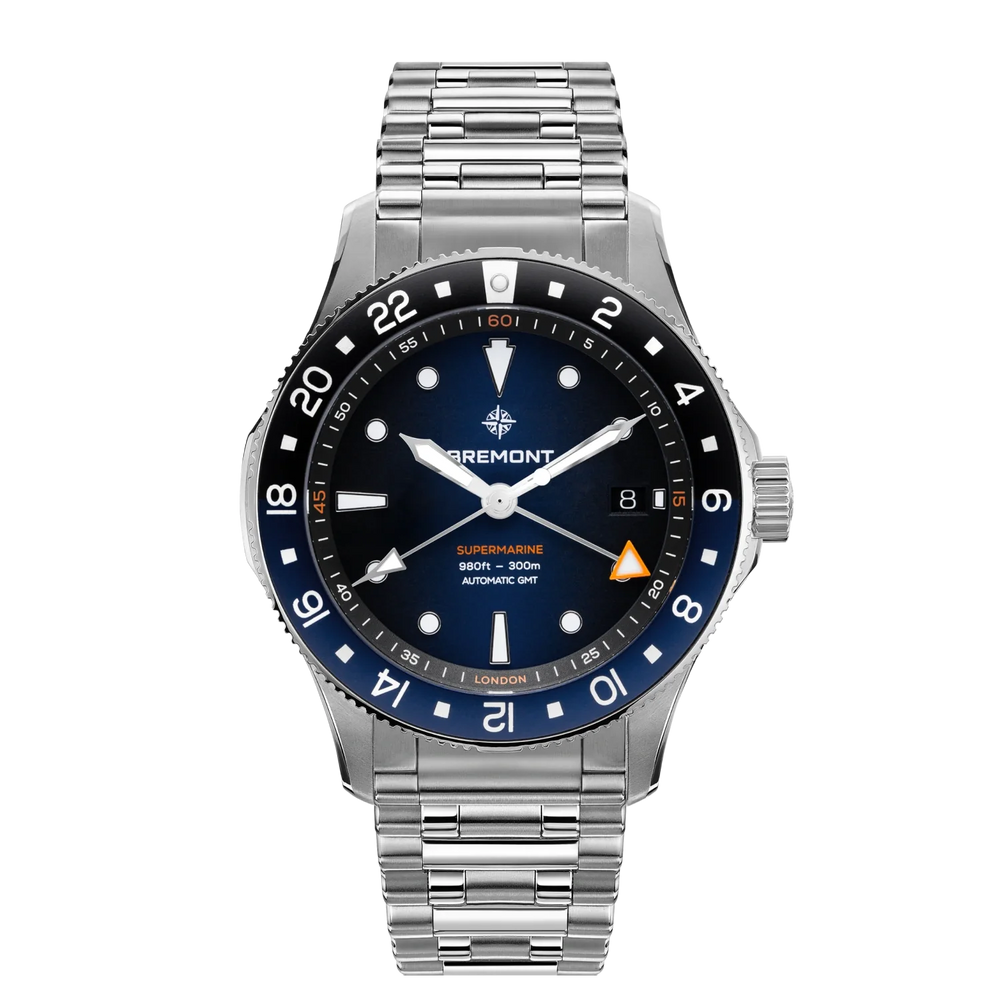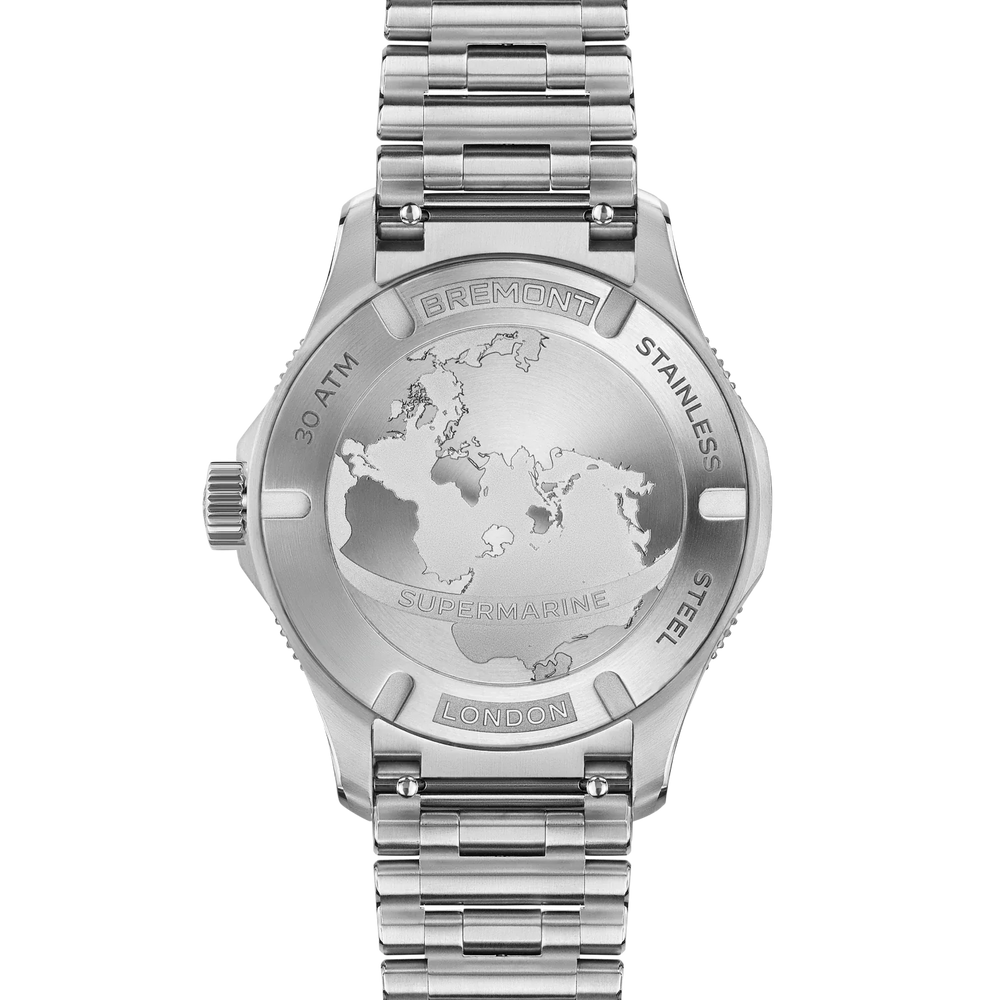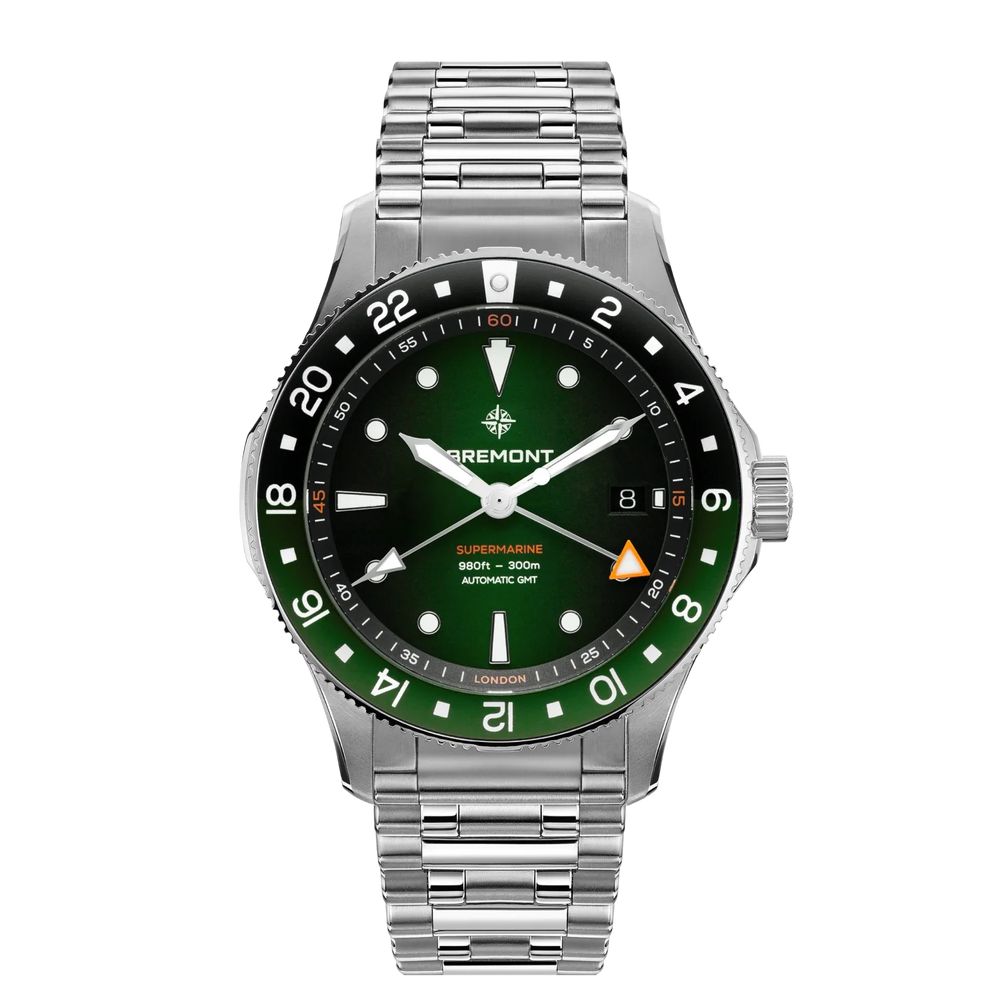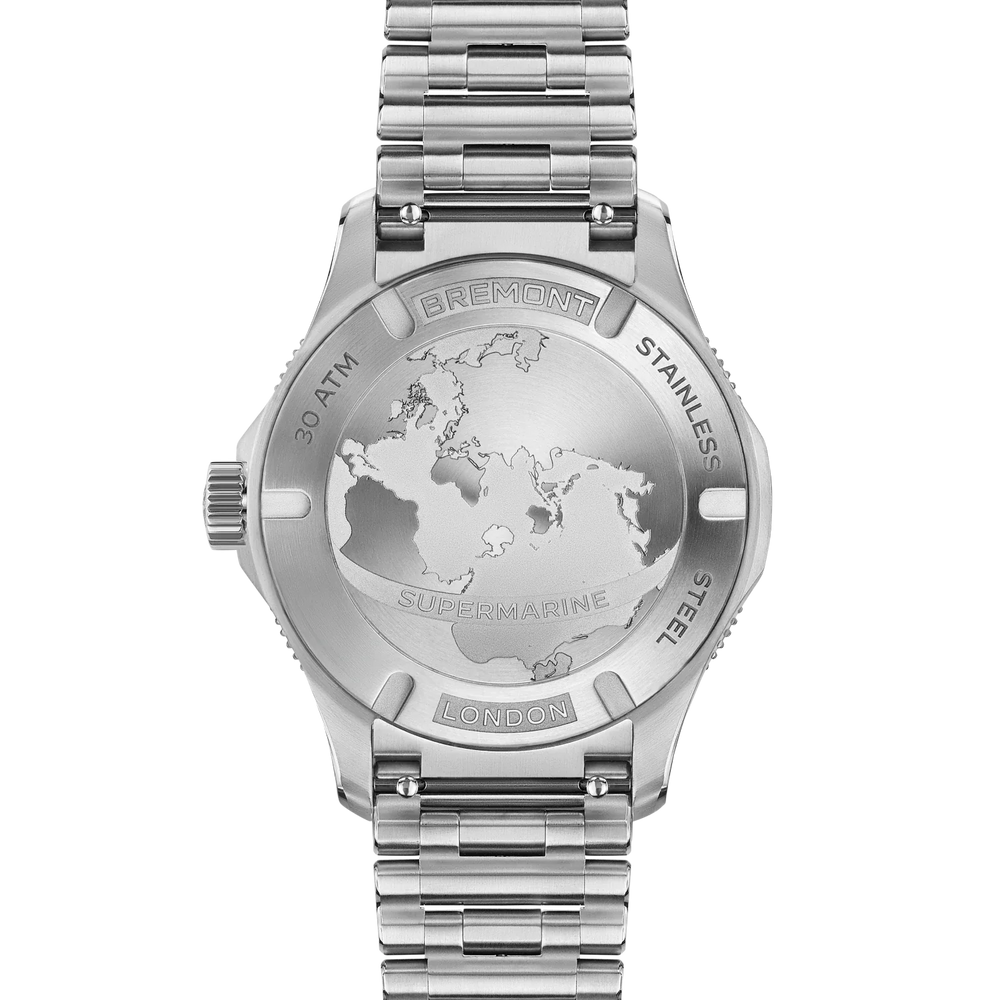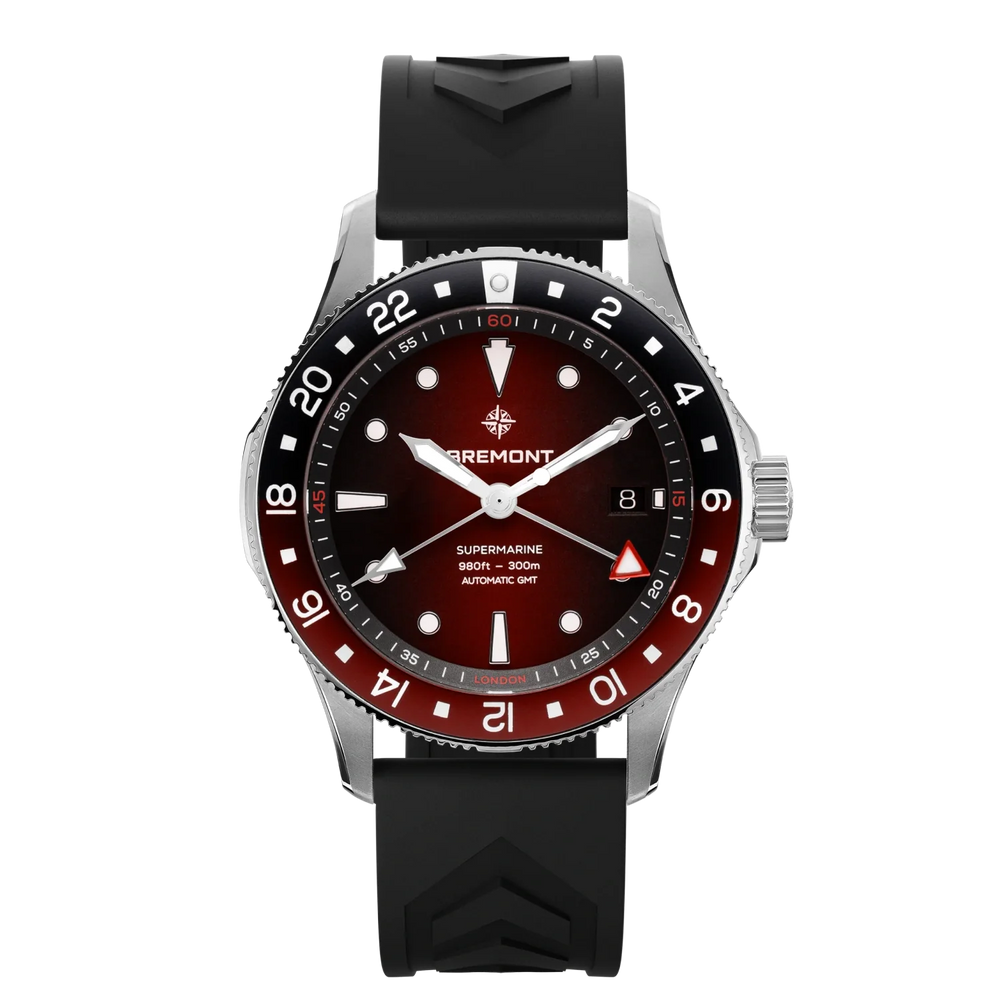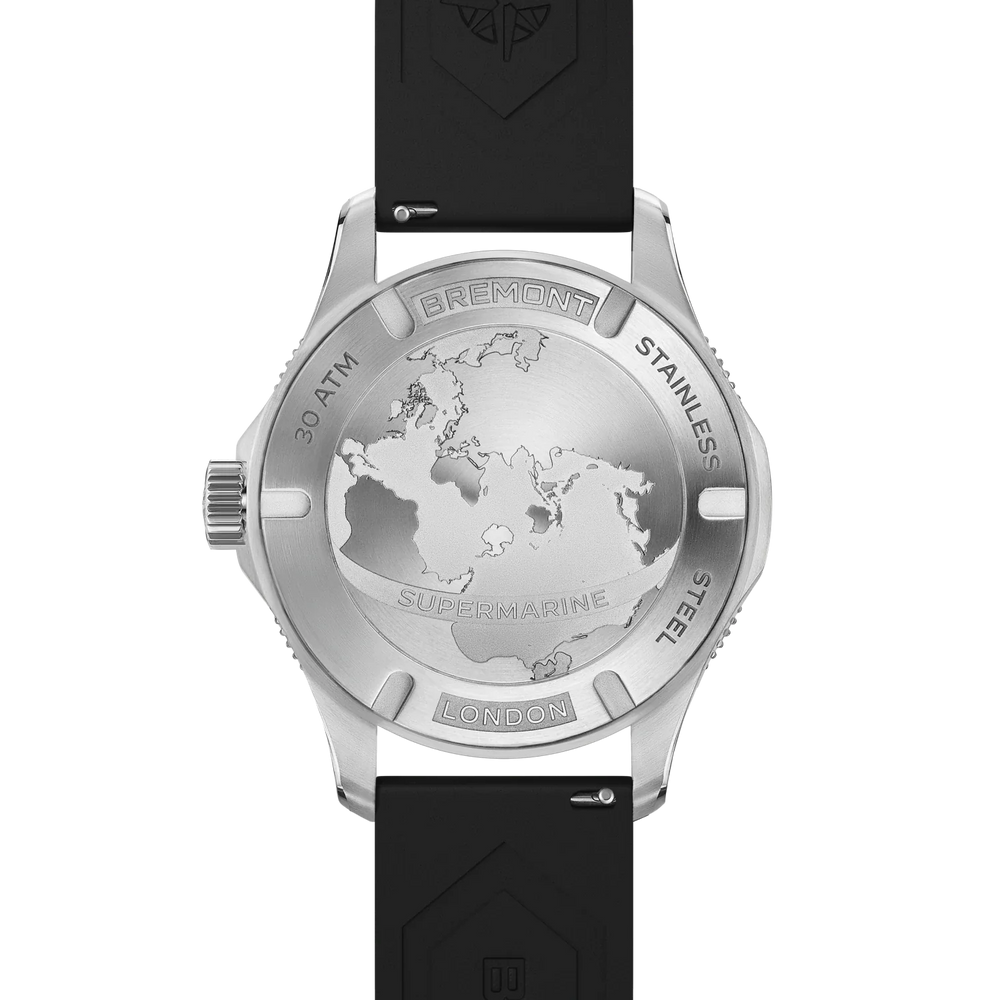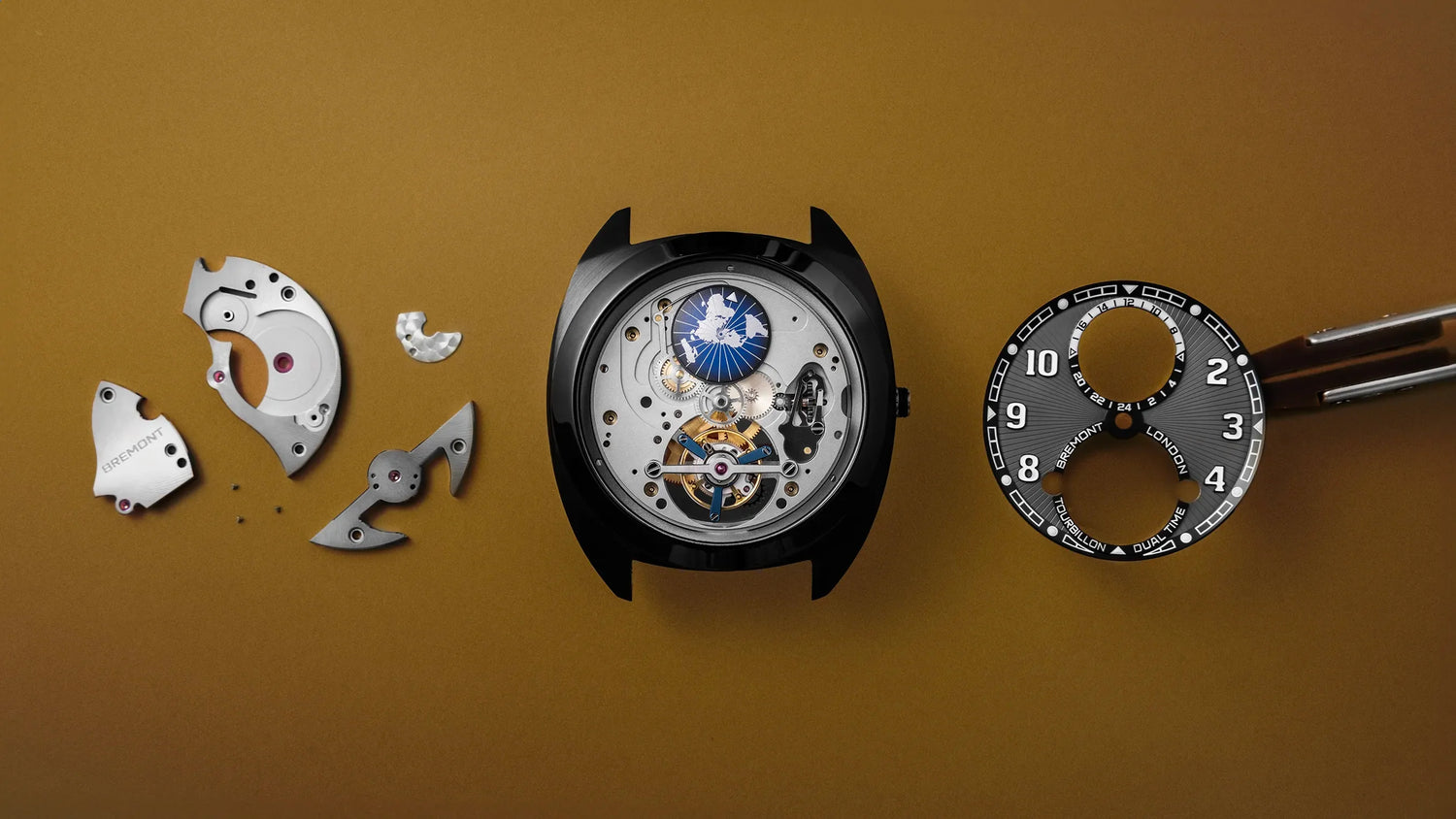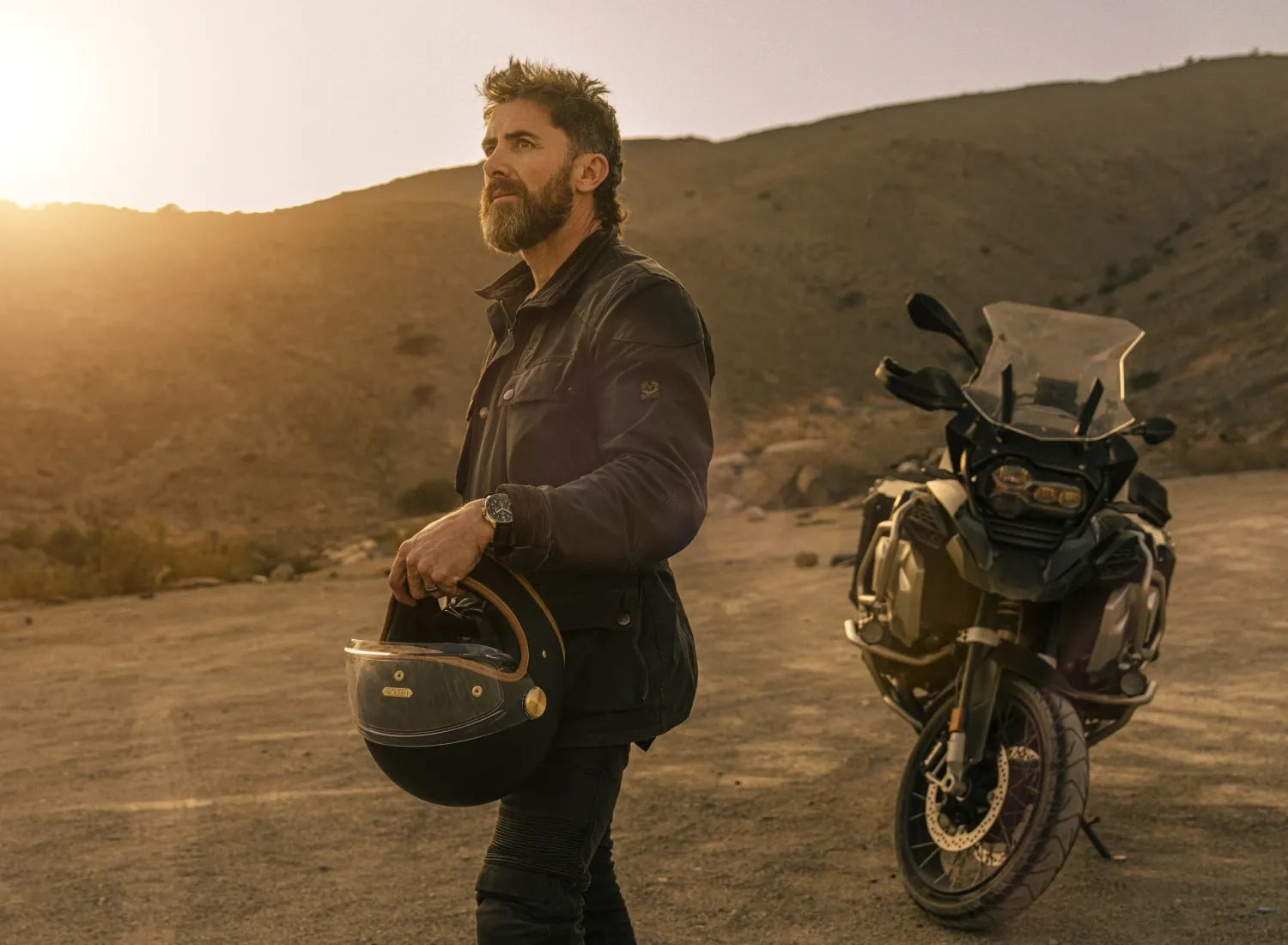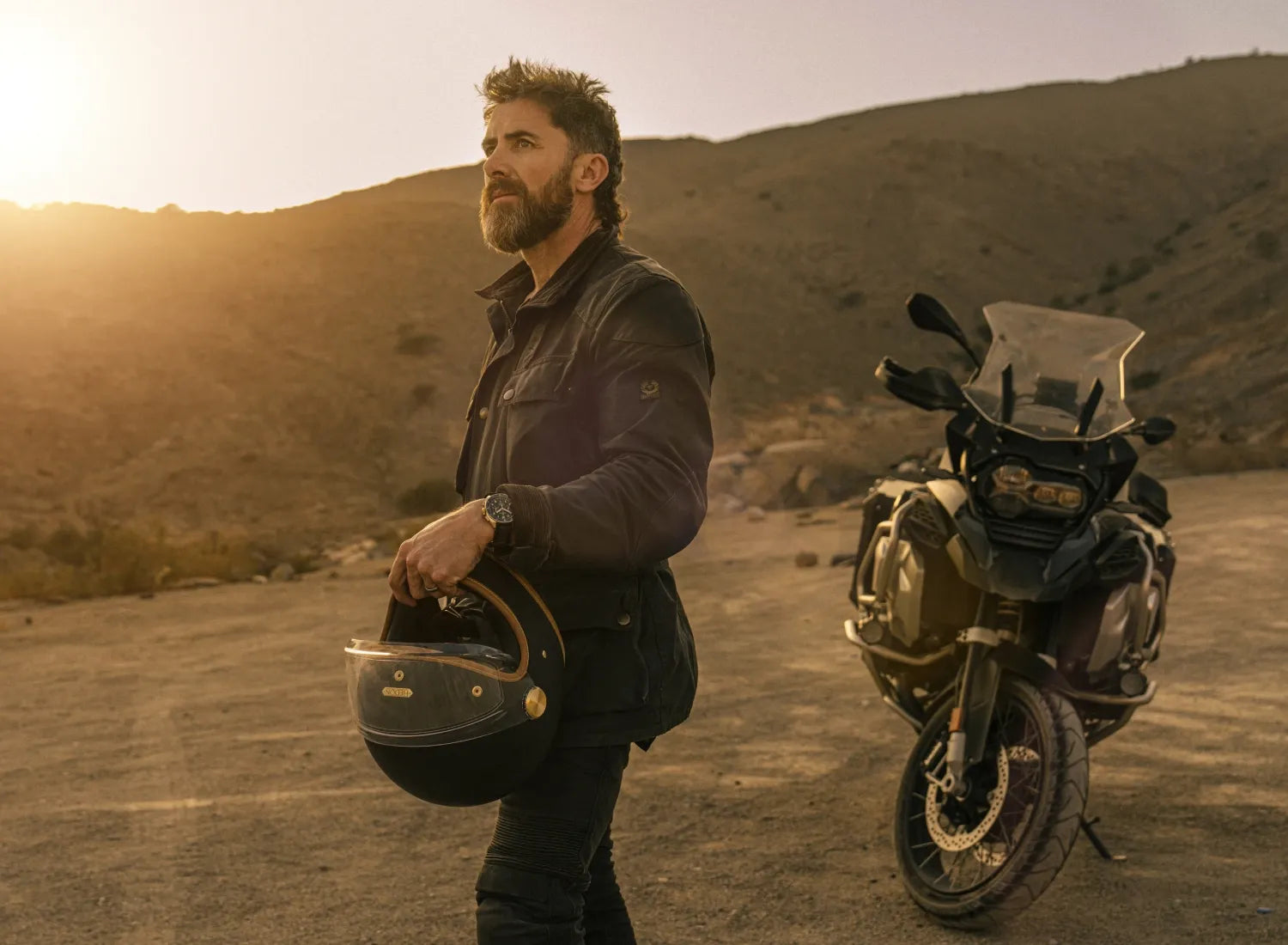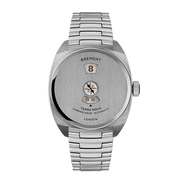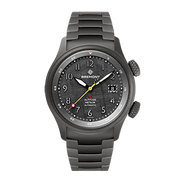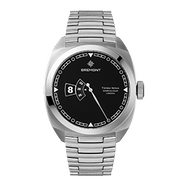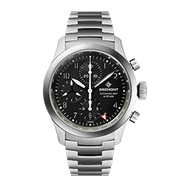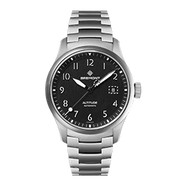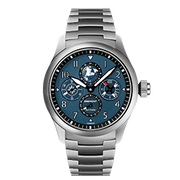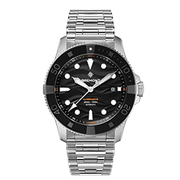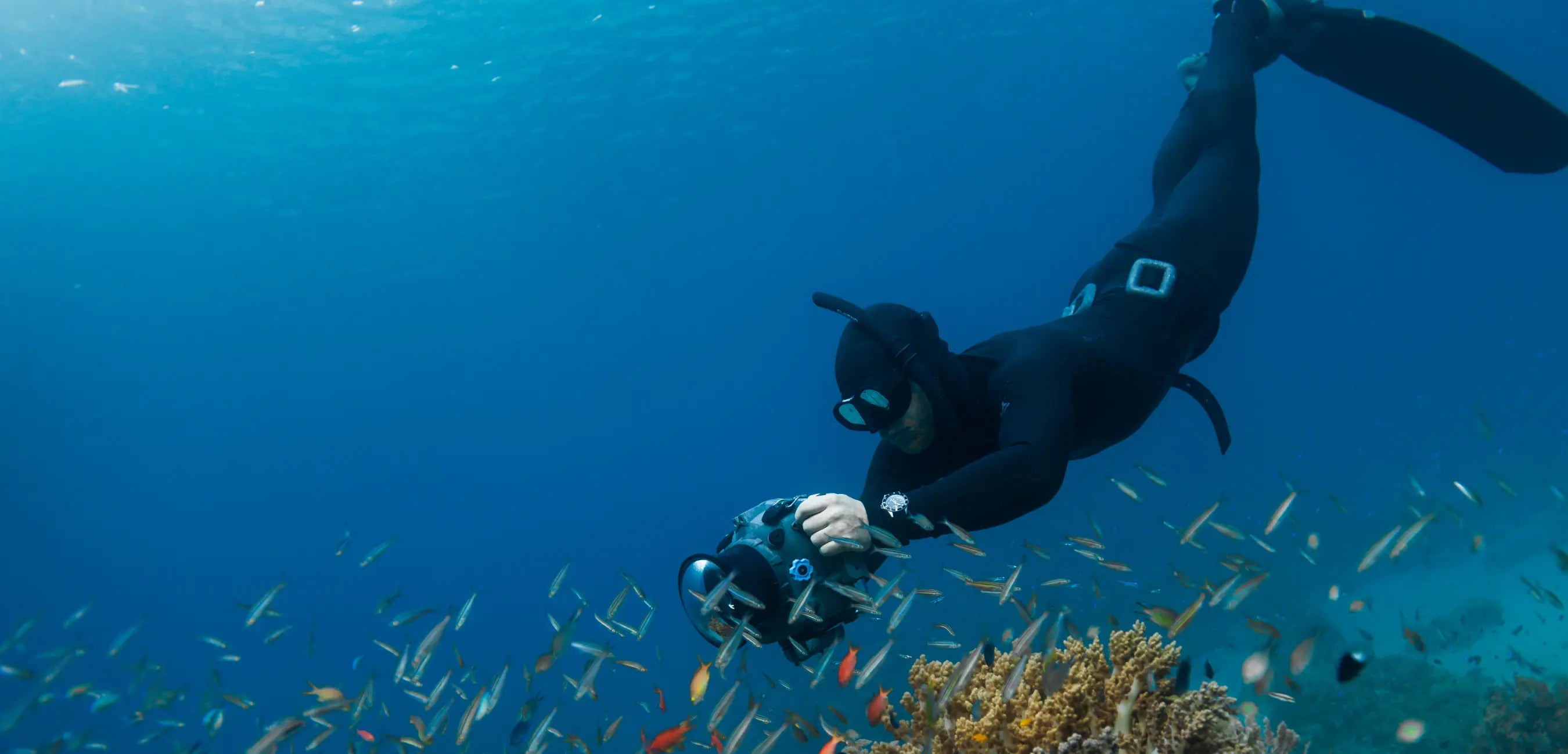
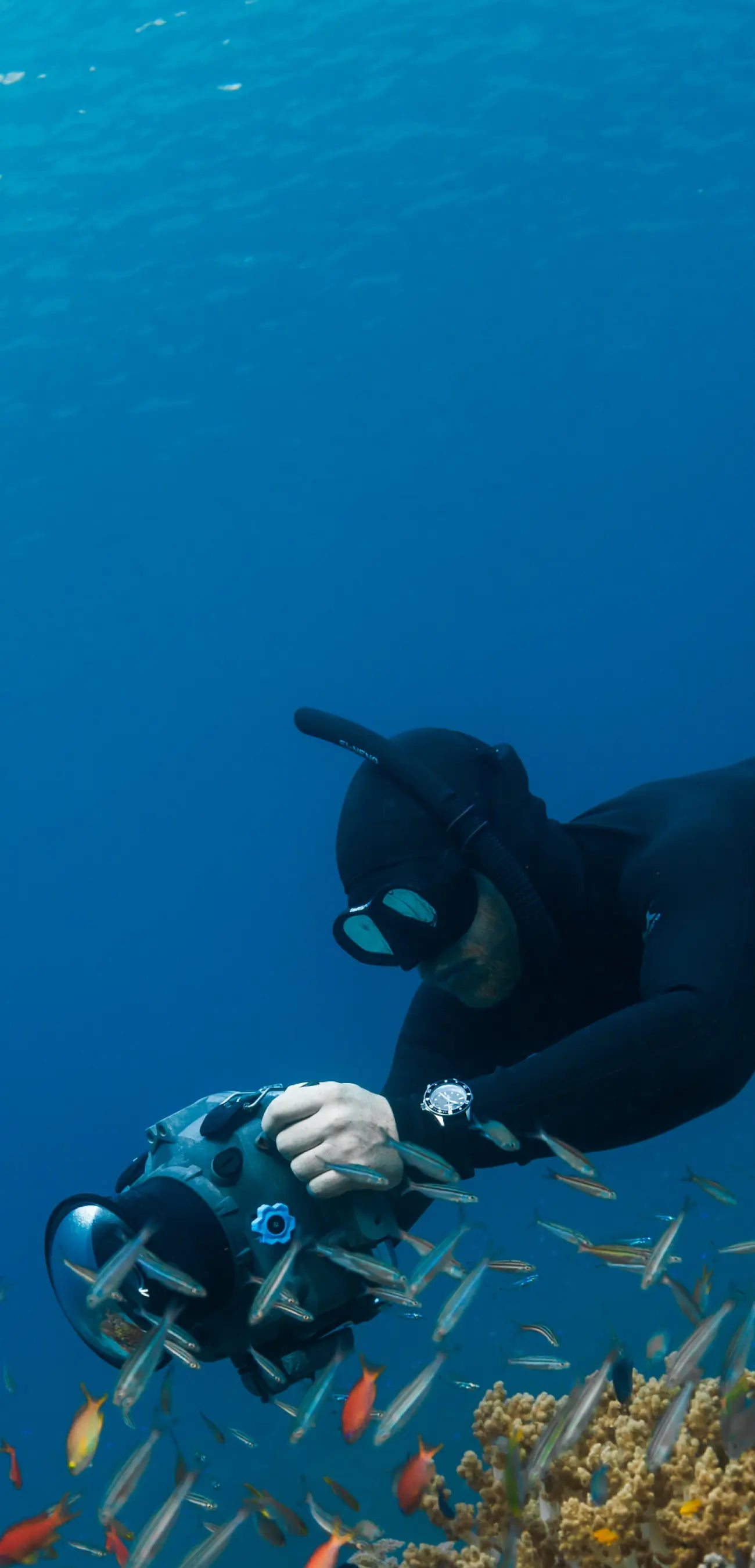
TAKE IT FURTHER:
DIVING IN INDONESIA'S UNDERWATER PARADISE
OUR UNDERWATER WORLD WITH ALEX KYDD
Pushing the limits doesn’t come naturally to everyone, but at Bremont our people have been pushing boundaries since the very beginning and our watches continue to reflect the same aesthetic and durability to explore.
In collaboration with Alex Kydd - a name synonymous with the underwater world and capturing its fragile beauty, we explore what it takes to become an underwater photographer, using his time beneath the waves and passion for photography to inspire conversations about ocean and marine conservation.
Alex, a native of Australia, spends most of his time exploring our ‘blue planet’ and a regular visitor to the world’s largest archipelago, Indonesia. His latest trip there provided a natural environment for the new, sleek black Bremont Supermarine 300M Date (tested to a depth of 300 metres), where he encountered majestic whale sharks among a wealth of extraordinary marine life. Whilst undeniably breathtaking, his images transcend beyond being visually stunning, serving as a poignant reminder of the delicate beauty that hangs in the balance, urging us to acknowledge the impact of human activities on our oceans and emphasising the need to protect them and their Inhabitants.
A FISH IN SHARKS CLOTHING
The strict guidelines around contact with Whale sharks is well known, but when these gentle giants float by, it is impossible not to be impressed and to try and capture their majesty on film and Alex is no exception.
Despite its moniker the Whale shark is in fact not a shark at all, but the largest fish in the World’s oceans, reaching up to 20m’s long and 20 tonnes in weight. Most of their time is spent opening its 4ft wide mouth to feed on the plentiful small shrimp and plankton that thrive in these warm waters, while speed is not of the essence for these magnificent creatures, that take on journeys of up to 1,000 miles at a leisurely pace of 3mph. If left alone they can reach up to 150 years old, but unfortunately they are not always treated with the respect they deserve and are now considered an endangered species. A shrinking habitat brought on by a combination of climate change, fishing nets, plastics and an appetite in certain cultures for their fins to be used as culinary delicacies, means that a clearer understanding of these animals is crucial for their very survival. Hopefully features such as this with Alex highlights the beauty of these gentle giants and the need to save them from extinction
.
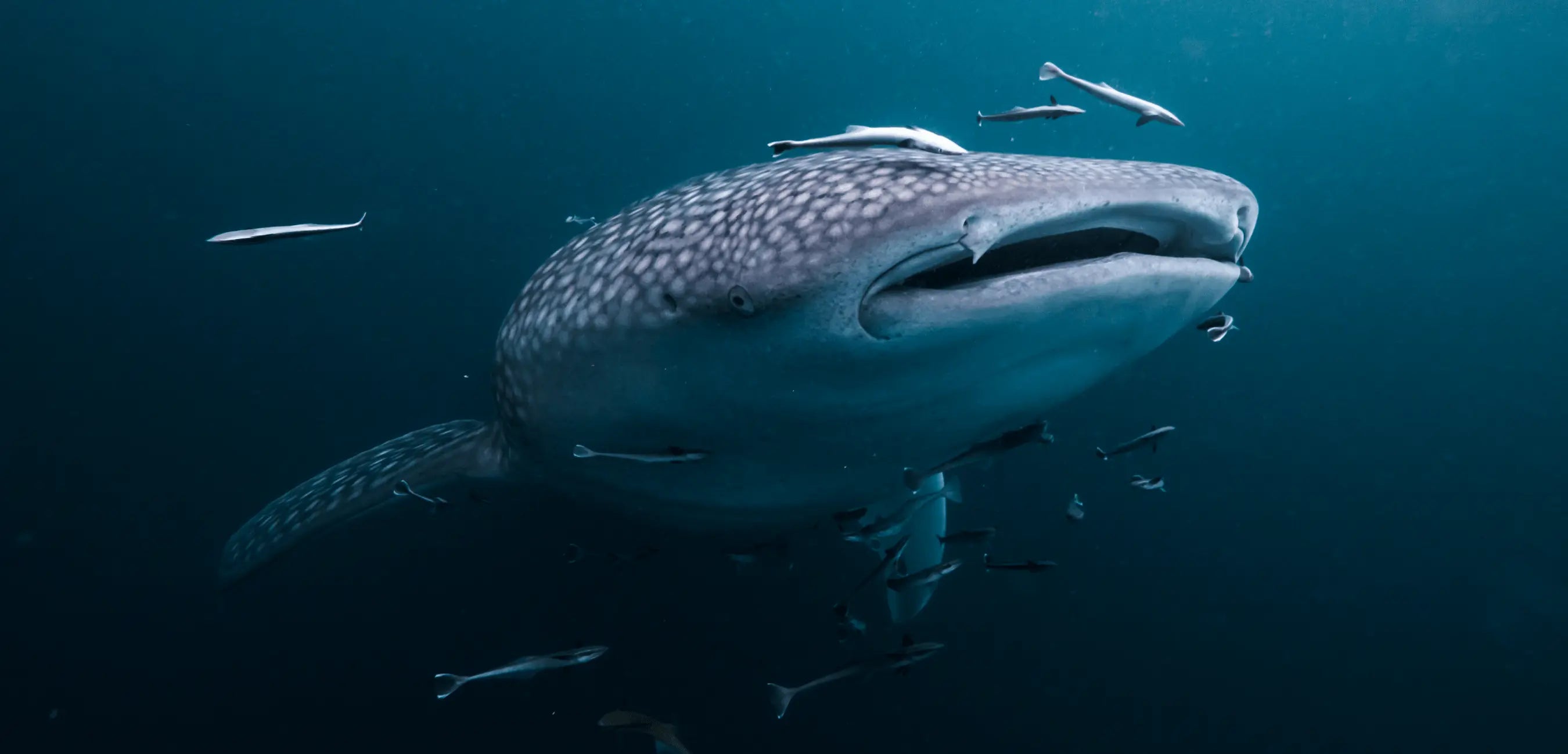
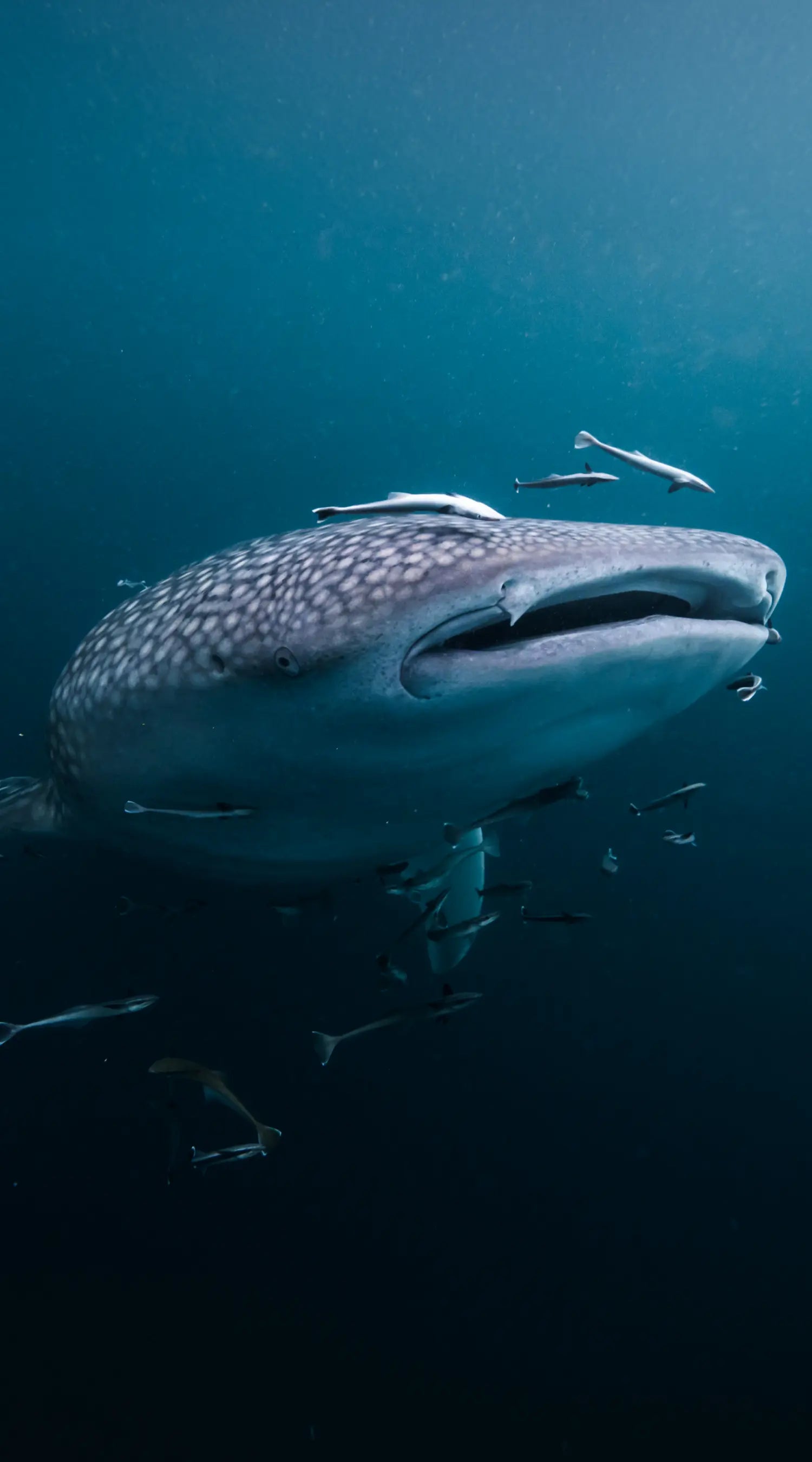
TEAMING WITH LIFE
The areas in and around Indonesia’s coral reefs are home to a spectacular diversity of marine life, boasting some of the most surprising and rare marine wildlife in the world, from Manta rays gliding gracefully to the elusive pygmy seahorses. Rarer species such as the ornate Ghost Pipefish, the Mimic Octopus, and the elusive Dugong has made it a hotspot for marine biologists and conservationists to study and protect these rare and incredible creatures, while the Indonesian government has shown a similar commitment to this unique environment by ensuring that these remarkable animals continue to thrive in their natural environment.
IN CONVERSATION WITH ALEX KYDD
How did you fall in love with the ocean?
I grew up in Melbourne, just a few streets from the water. My dad took me snorkelling in my teenage years, and I believe that’s what sparked my fascination with the underwater world. Before long, I had a simple waterproof camera to start documenting what I saw. After years of watching BBC documentaries, I was always captivated by exploring the ocean world.
How did your passion for photography begin?
My passion for photography began when I first started snorkelling in Melbourne. With a very basic setup, I could capture images and show my friends what was beneath the water. That’s where my love for photography first took root. At 21, I went off to study Marine Biology. Although I didn’t initially pursue photography professionally, I started experimenting with underwater photography during my degree. It wasn’t until I graduated and moved to Ningaloo Reef in Western Australia that I seriously started pursuing it. Working as an underwater photographer on tour boats, I had the opportunity to hone my craft and swim with an array of incredible marine life.
Can you describe the conditions of your favourite dive in Indonesia? Where was this?
One of my favourite dives in Indonesia was in the Togean Islands, Central Sulawesi. The coral garden there was absolutely teeming with fish life. The diversity of hard and soft corals was amazing to see.
What does the ocean mean to you?
That’s a tough question! It’s my happy place—it’s almost like therapy. Every time you enter the water, you never know what you might see, and it’s such a misunderstood ecosystem. Everything is interconnected, and the more time you spend in it, the more you appreciate that.
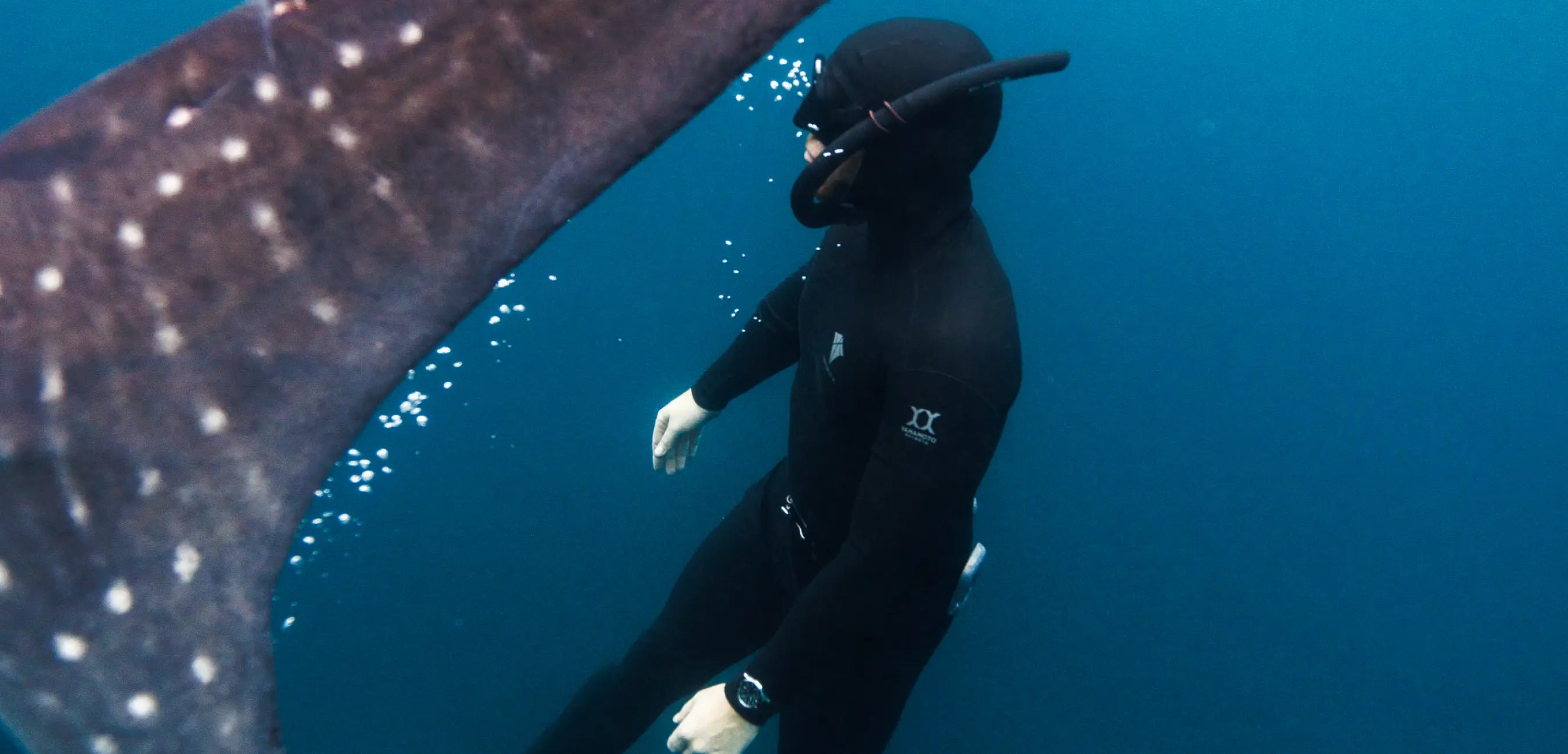
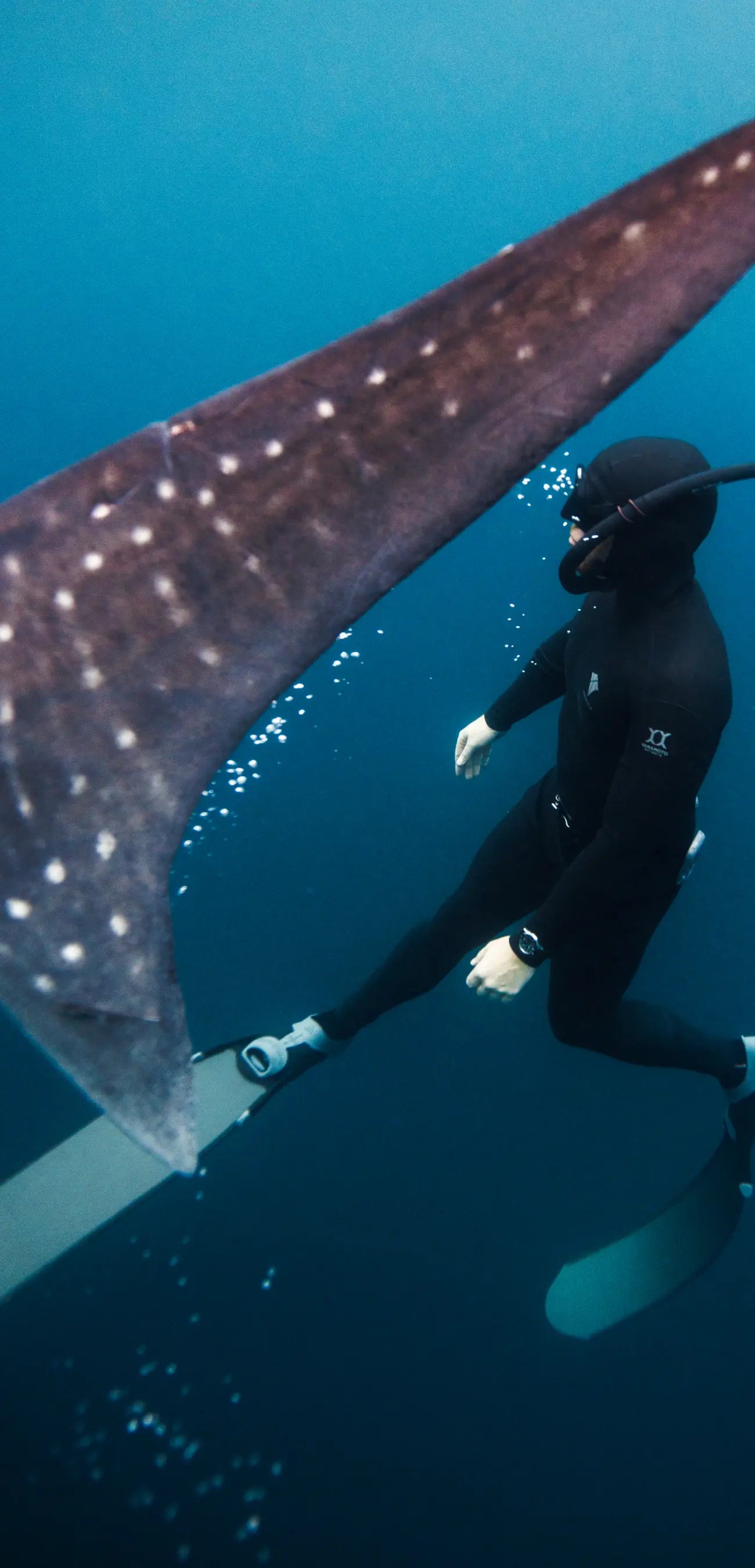
How does being below the water make you feel?
It’s a meditative experience. Nothing else matters when you’re down below on a single breath.
What are you looking for when trying to spot the perfect shot?
I’m always hoping to capture an image that makes people stop and stare, which is harder to achieve these days. Simple images with strong composition can be the most powerful.
How do you embody Bremont's mantra, 'Take It Further’?
For me, it’s about going the extra mile—seeking out those remote destinations and uncovering hidden gems for my work and travels.
What does ocean conservation mean to you?
It’s no secret that our oceans are at risk—from overfishing, climate change, habitat destruction, and plastic pollution. Ocean conservation means we, as stewards of the sea, must protect it. The ocean provides us with so much—from the air we breathe to the food we eat. While it’s tough to stay optimistic, it’s essential to remember we need to leave the ocean in a better state for future generations.
Have you witnessed a change in our oceans since you began exploring them?
Yes, I’ve seen some heartbreaking changes. Sites I’ve visited for years have lost much of their coral cover, with mass bleaching affecting places I once loved. I’ve also encountered plastic pollution so severe you have to push it aside just to swim through.
What do you want to inspire with your photography?
My goal is to help people connect with the natural world through my photography. I want to inspire others to care about the environment. Most of us live in cities, disconnected from nature, and it’s easy to forget how beautiful the natural world is.
You’ve been testing the Supermarine 300M Date.What do you make of its performance?
It’s tough and reliable, the perfect dive companion.
THE SUPERMARINE 300M DATE
The new Supermarine 300M Date worn by Alex Kydd has been entirely redesigned and now features a slimmer profile case shape in 904L steel to maximise robustness and comfort in unison.
The symmetrical case includes guards for both crown and bezel, ensuring practical operation whilst increasing durability and safety by preventing accidental adjustment or damage through shocks or knocks, crucial for any diver swimming around coral reefs.
The naval inspired cross-hair in the centre of the gradient dial, created by the trapezoid indexes, along with the improved clarity of the applied Super-LumiNova® for visibility in low light conditions, is perfect for murky water and night dives.
The Supermarine 300M Date is also available on a entirely new 904L steel bracelet has been developed for the Supermarine range offering exceptional fluidity and quality with an undulating shape accommodating all wrist sizes. Infinity shaped links alternate in a polished and satin finish.
The case back is engraved with a map of the world’s oceans, emphasising the intent of this practical elegant sports watch, as illustrated by Alex Kydd in the Ocean
.

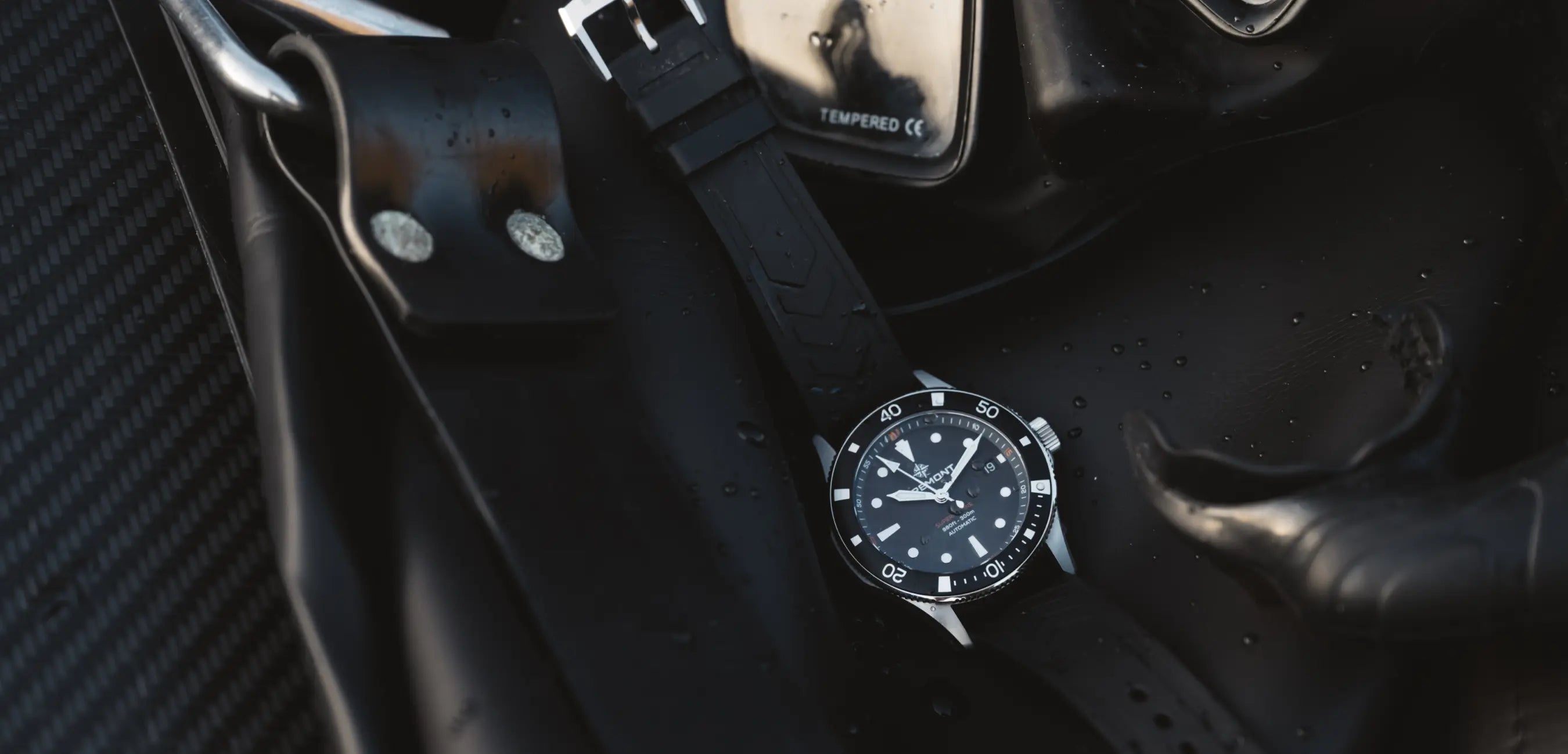
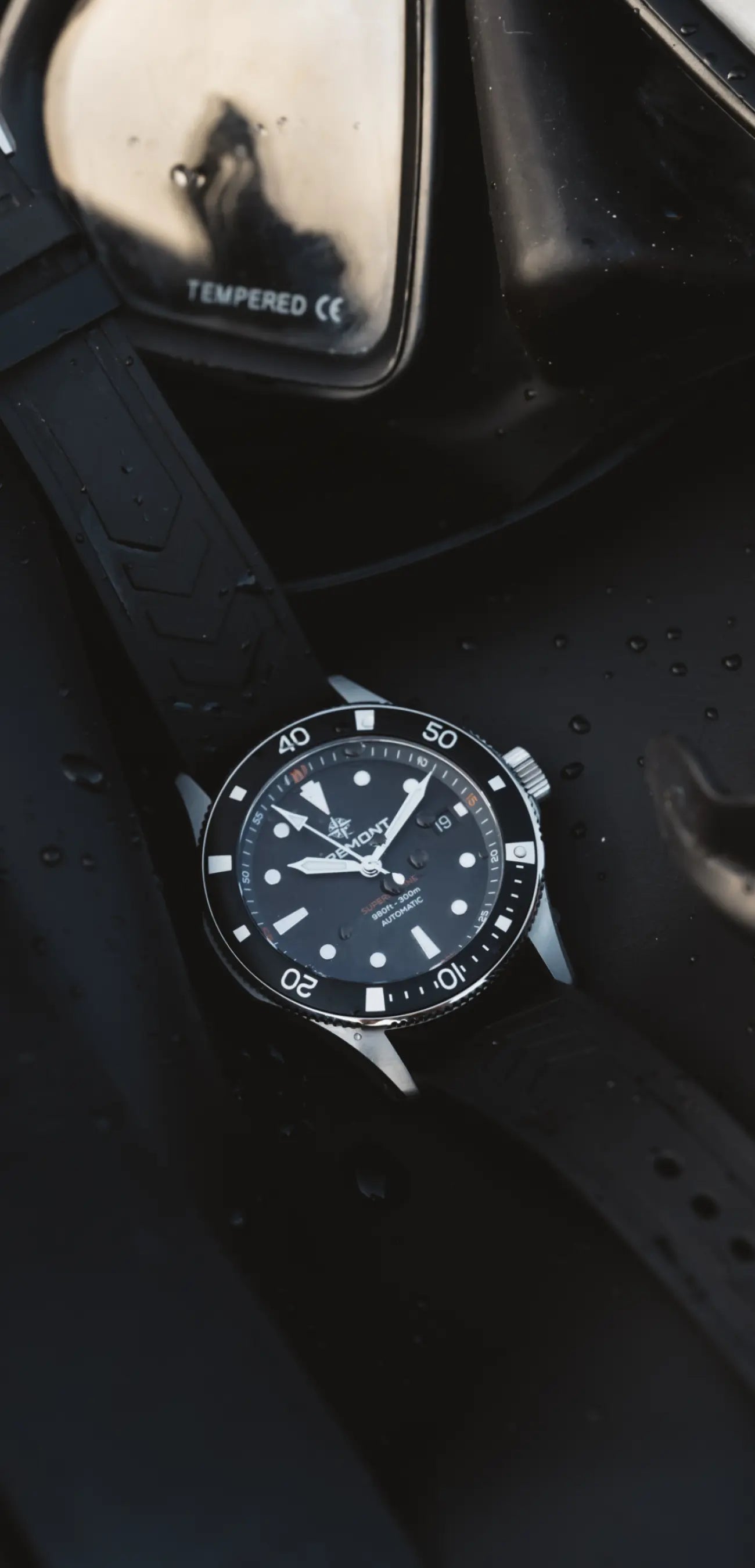






![Bremont Watch Company Watches | Mens | Supermarine Supermarine 300M [Blue Dial, Rubber]](http://us.bremont.com/cdn/shop/files/Bremont_Terranovaheroimage07copy_85b29297-8c0e-4c52-a26d-ace09e3e9da6.png?v=1712625312&width=1000)
![Bremont Watch Company Watches | Mens | Supermarine Supermarine 300M [Blue Dial, Rubber]](http://us.bremont.com/cdn/shop/files/BremontTerraNovabackcompass02_4155c940-51e8-47b6-9bc7-a9c5ec704cd6.png?v=1712625312&width=1000)
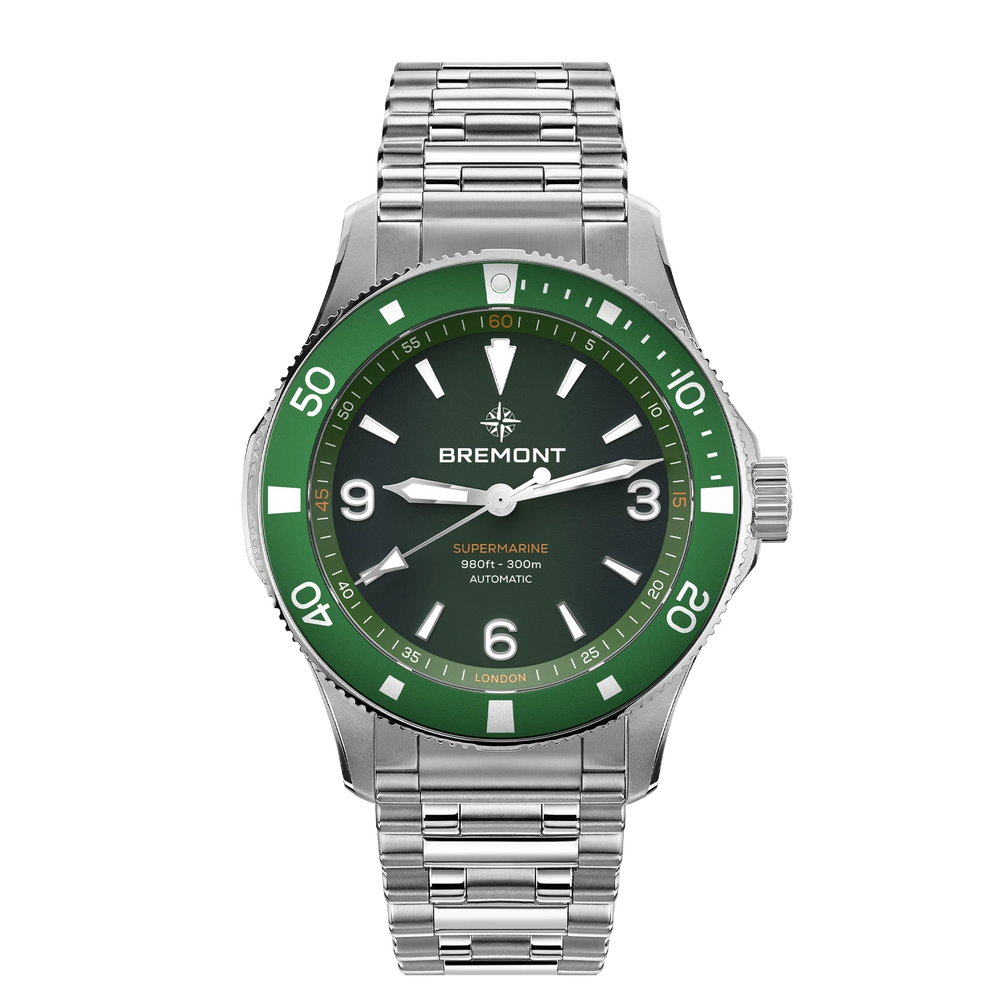
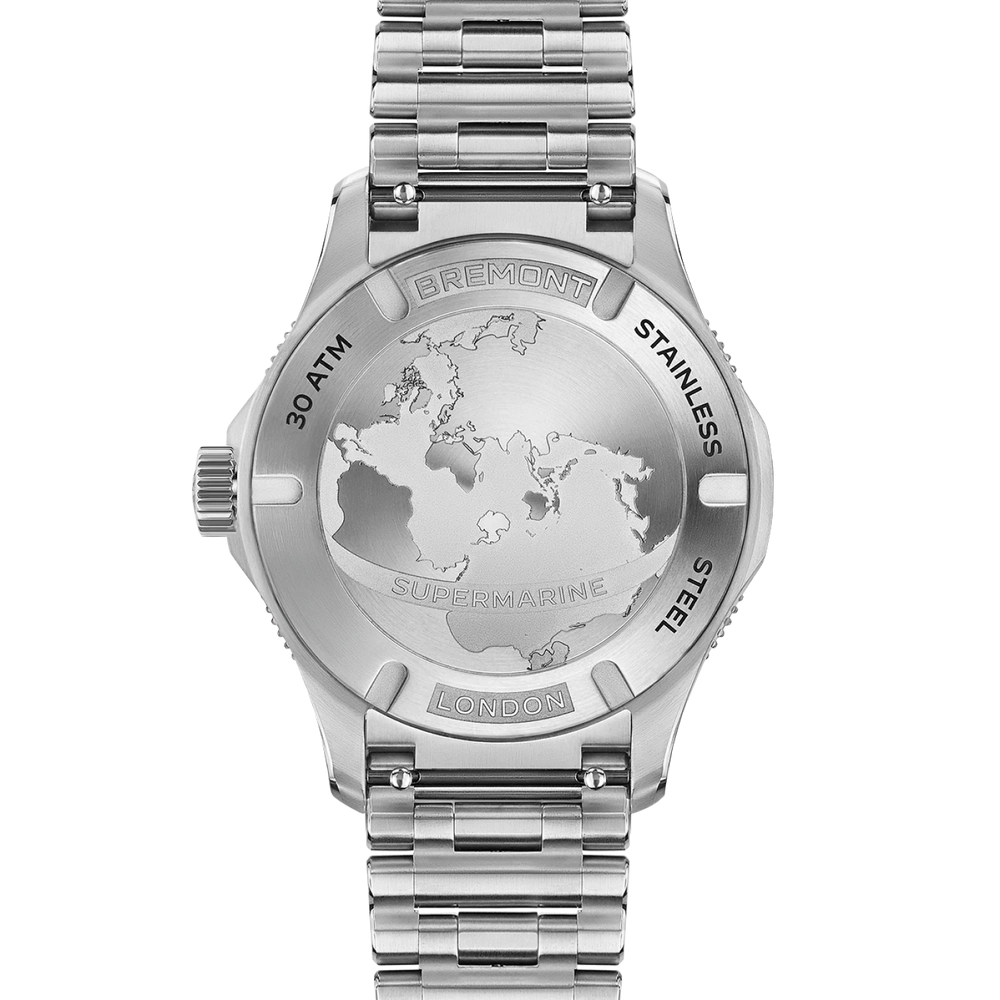
![Bremont Watch Company Watches | Mens | Supermarine Supermarine 300M [Black Dial, Rubber]](http://us.bremont.com/cdn/shop/files/Supermarine-S300Date-1copy_8dd53c60-d05e-4920-b7ee-10ec6b96616c.png?v=1712625313&width=1000)
![Bremont Watch Company Watches | Mens | Supermarine Supermarine 300M Date [Black Dial, Rubber]](http://us.bremont.com/cdn/shop/files/Supermarine-S300Date_8df188a6-86c0-44d8-8f2d-ecea594f9da5.webp?v=1712625313&width=1000)
